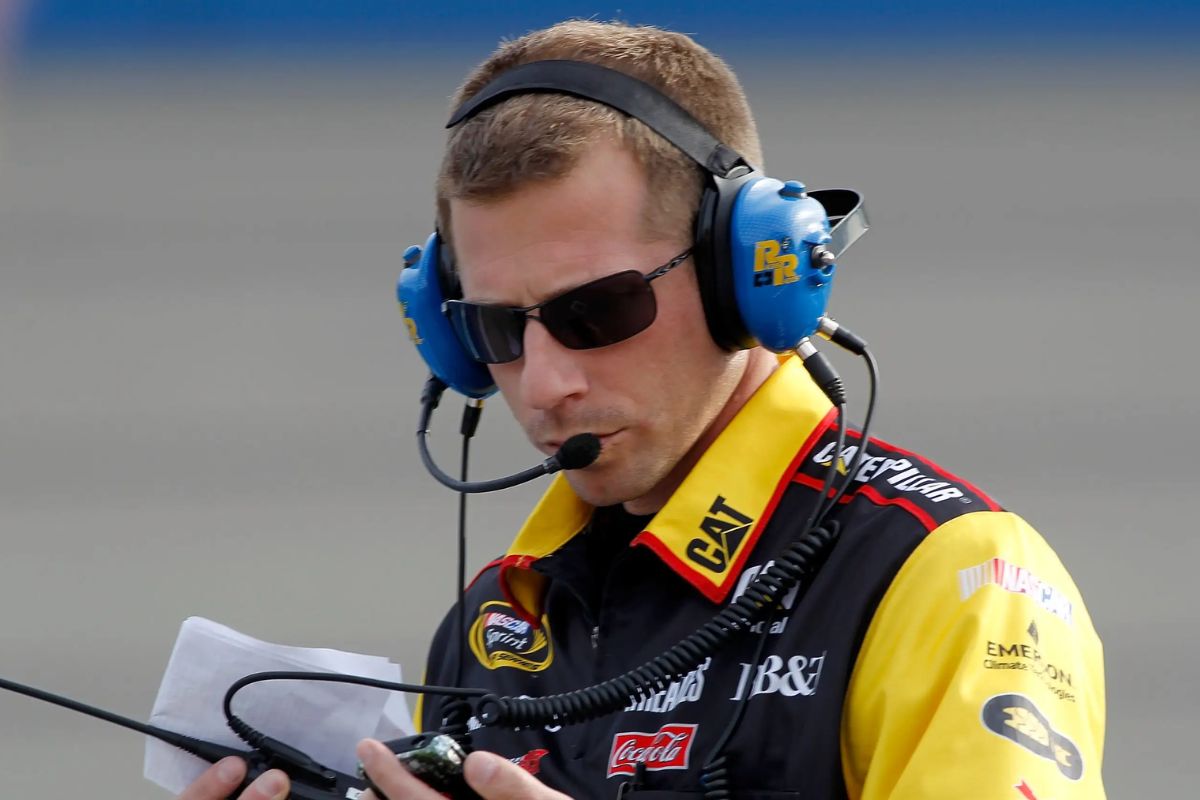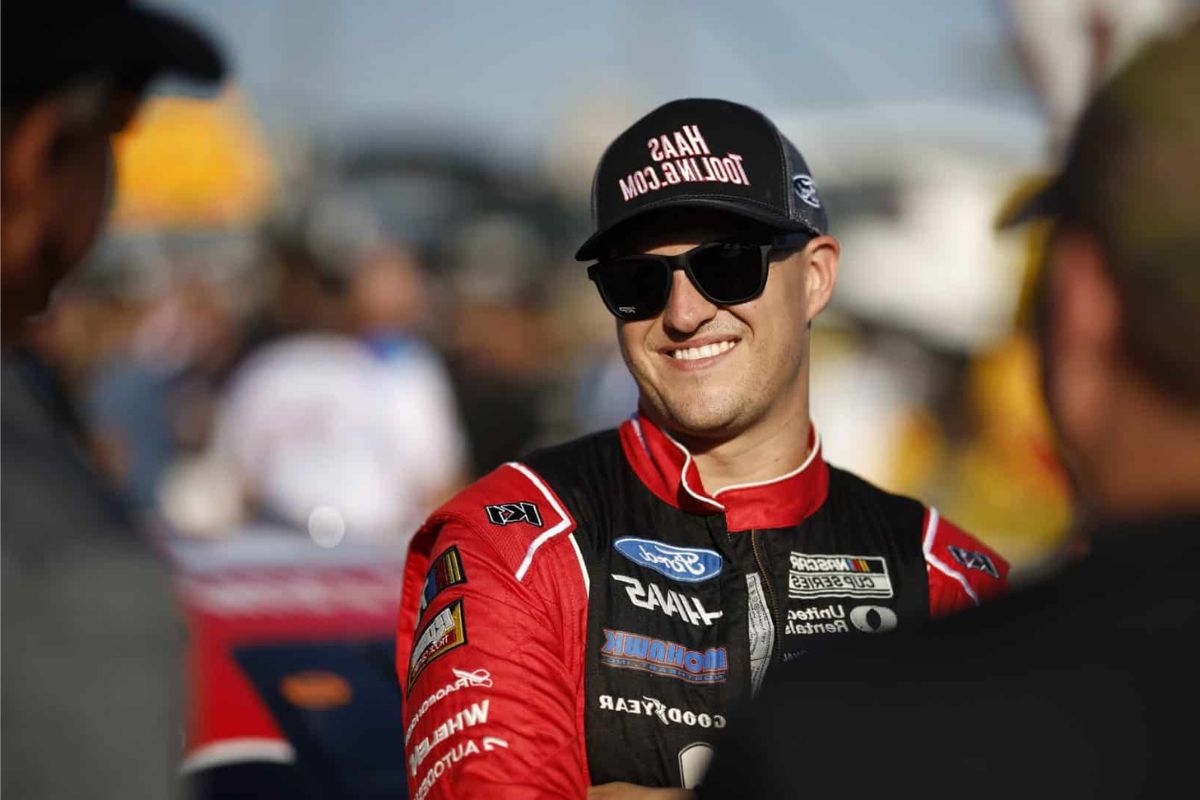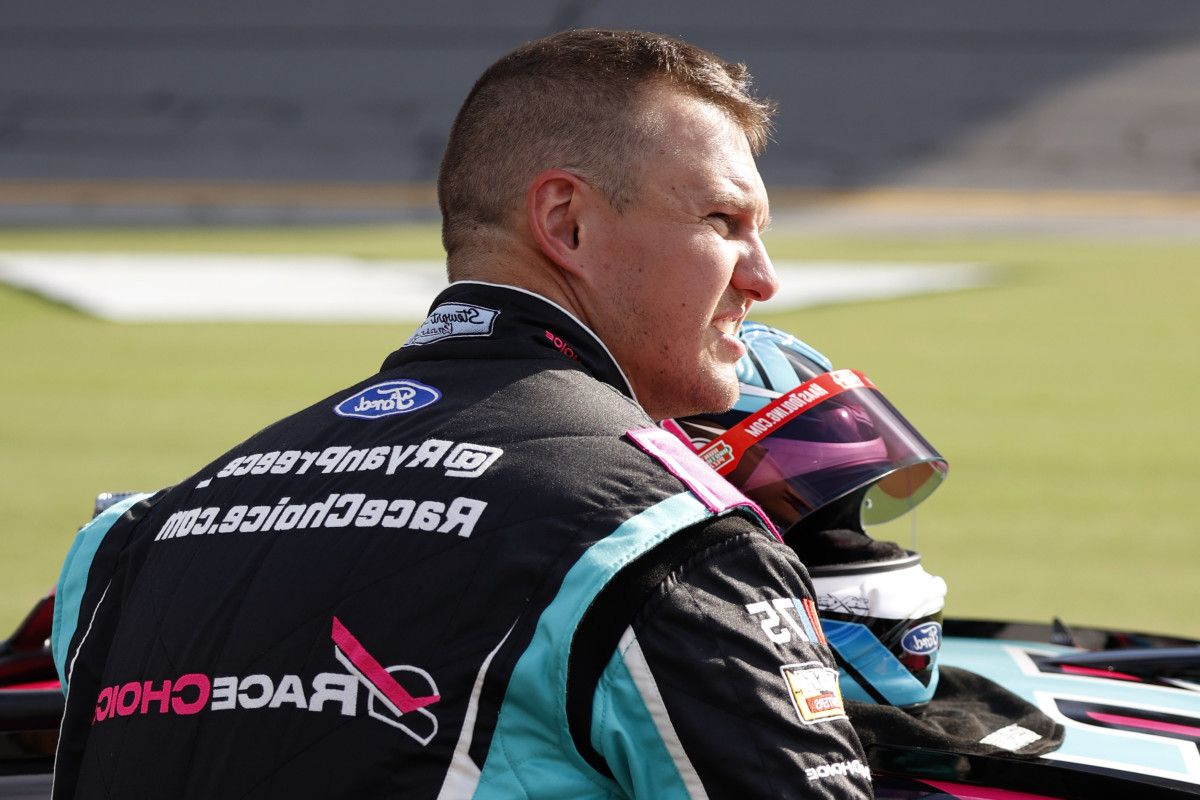Drew Blickensderfer Reveals Cause of Fire: In a recent detailed analysis, Drew Blickensderfer, the crew chief for the No. 41 Ford Mustang, disclosed the cause behind the alarming fire in Ryan Preece‘s car during the race at Dover Motor Speedway. The incident, attributed to incorrectly installed bolts on the headers and collectors, raises pertinent questions about team protocols and safety standards in NASCAR racing. This disclosure not only casts a spotlight on the meticulous nature of race car preparation but also prompts a deeper examination of team practices.
Key Takeaways
- Drew Blickensderfer identified improperly installed bolts on headers and collectors as the cause of the fire.
- Incorrect installation led to a fire in Ryan Preece’s No. 41 Ford Mustang at Dover.
- The incident highlighted a procedural oversight potentially affecting all team vehicles.
- Proper installation of racing components is crucial for vehicle safety and performance.
- The fire occurred due to a mechanical error, not driver error or external conditions.
Ryan Preece’s Misfortune at Dover Motor Speedway
At Dover Motor Speedway, the race took an unexpected turn when Ryan Preece’s No. 41 Ford Mustang was suddenly caught in flames on Lap 61, highlighting a significant setback for the Stewart-Haas Racing team. This alarming incident not only brought Preece’s race to a premature end but also cast a spotlight on the inherent risks and mechanical vulnerabilities in motorsport environments.
The incident occurred during a critical phase of the race, where drivers were settling into their rhythms, aiming to position themselves advantageously for the latter stages. The sudden eruption of flames from the rear of Preece’s vehicle was unusual and raised immediate concerns regarding the safety mechanisms and the durability of racing components under extreme conditions. Flames in such scenarios suggest a probable failure in the fuel system or severe overheating issues, which can be precipitated by numerous factors including mechanical failure, collision impact, or systemic malfunction of the car’s intricate systems.
Drew Blickensderfer on the Incident
Drew Blickensderfer, crew chief for Ryan Preece, acknowledged a significant oversight in the installation of vital components as the primary cause of the fire that abruptly ended Preece’s participation in the Wurth 400. Blickensderfer detailed that the bolts connecting the headers and the collectors, which are pivotal in maintaining the structural integrity of the exhaust system, were improperly installed. This error permitted the collectors to detach and come into contact with the vehicle’s rocker box, sparking the fire.
“That was self-inflicted. That was the bolts between the headers and the collectors keeping everything together. We had some issues there amongst the teams on our side. They were not installed correctly and it was allowing the collectors to come disattached from the headers, kind of fall on that rocker box and cause an issue.” “So, it was a self-inflicted error, a little change in process that someone didn’t catch. And it was close to happening on all of our cars, to be honest with you.” -Blickensderfer
Noah Gragson crew chief Drew Blickensderfer said the fire in the Ryan Preece car at Dover was a self-inflicted issue by the organization that was close to happening on all the SHR cars. The issue has been corrected. He explains: pic.twitter.com/i7VjLMkPE2
— Bob Pockrass (@bobpockrass) May 2, 2024
Ryan Preece’s Frustration
Ryan Preece expressed his exasperation vividly, criticizing his team for the preventable mishap that compromised his performance at Dover concrete oval track. His frustration was noticeable as he addressed the media, pointing out that the fire in his car’s door foam, which effectively ruined his race, was an avoidable error.
“I felt like I was on fire and I went the first seventy laps just trying to push through and then it got so bad that I couldn’t put my hands on the wheel. Whatever happened, it’s completely unnecessary and we can’t afford days like this. It wasn’t necessary it could have been prevented.” -Ryan
The impact of such setbacks is particularly severe in motor racing, where each race contributes significantly to the season’s momentum and ultimate success. For Preece, who has been struggling to find his rhythm this season, incidents like the one at Dover serve as major setbacks. Despite starting from a disadvantaged position in 28th place, there was an expectation for him to navigate through the ranks, potentially securing a much-needed top finish. However, the unforeseen fire curtailed these aspirations early.
A frustrated Ryan Preece didn't want to detail what was on fire but explained what was happening. He was frustrated since he felt the issue could have been prevented. pic.twitter.com/QYCXx3FFSe
— Bob Pockrass (@bobpockrass) April 28, 2024
Ryan Preece’s Standings
Following the disappointing end of the Wurth 400, Preece finds himself in 28th place in the Drivers standings, a position that highlights the challenges he has faced throughout the season. This standing is a significant indicator of the cumulative difficulties and setbacks, including mechanical failures and strategic missteps, that have beleaguered his campaign.
For Preece, every race is an opportunity to refine strategies and push beyond the limits set by previous performances. The fluctuation in points and positions highlights the variability inherent in racing, influenced by myriad factors from pit stop efficiency to tire management. As Preece navigates these complexities, his adaptability and learning from each event become vital for gradual improvement.
News in Brief: Drew Blickensderfer Reveals Cause of Fire
The incident involving Ryan Preece’s No. 41 Ford Mustang at Dover Motor Speedway serves as an essential reminder of the importance of meticulous attention to detail in race car preparation.
Crew chief Drew Blickensderfer’s acknowledgment of the misinstallation of critical components highlights the potential repercussions on safety and performance in professional racing. This episode not only impacted Preece’s standings but also brought to light systemic issues that could affect broader team operations, necessitating stringent procedural reviews to mitigate future risks.
ALSO READ: Drew Blickensderfer: NASCAR Crew Chief And Daytona 500 Champion – Racing Career and Net Worth





